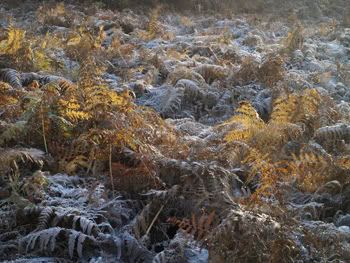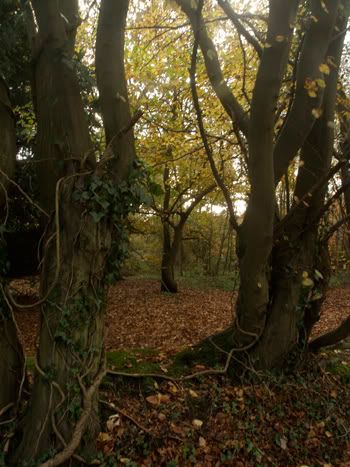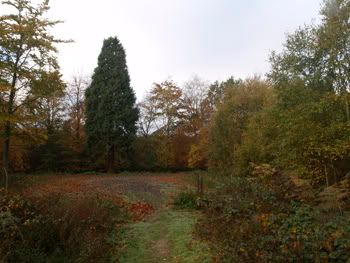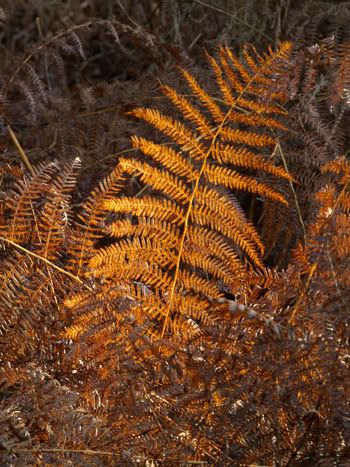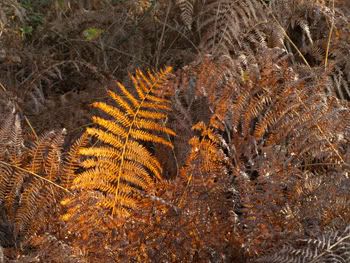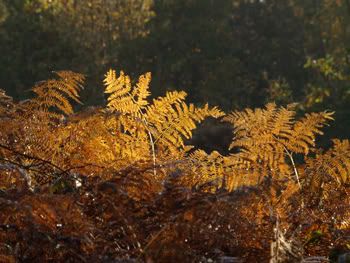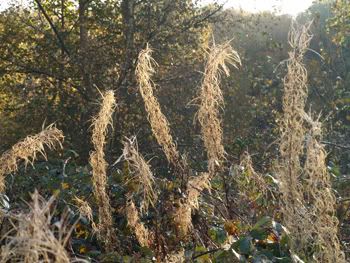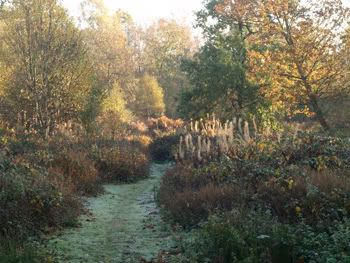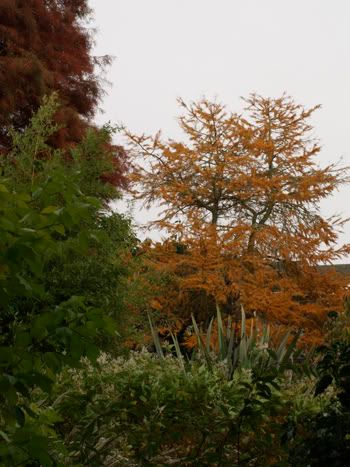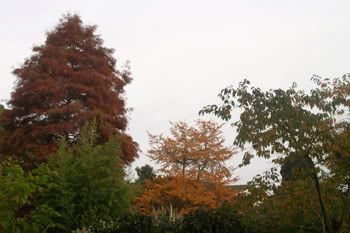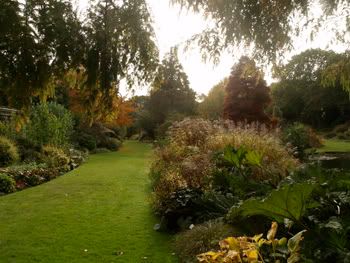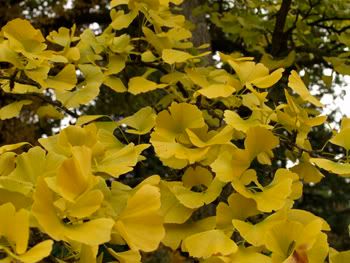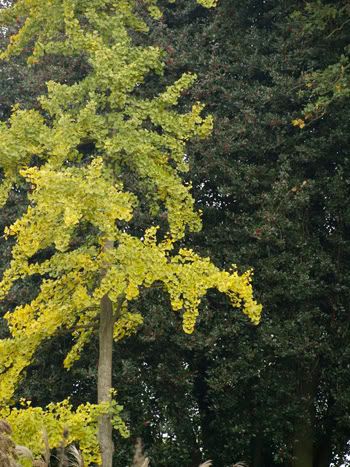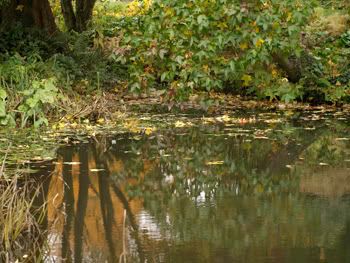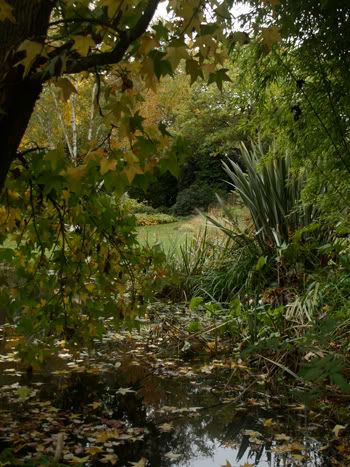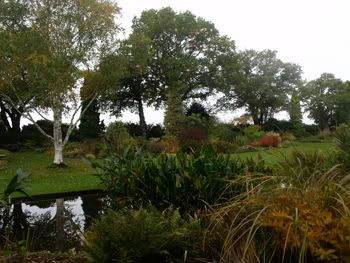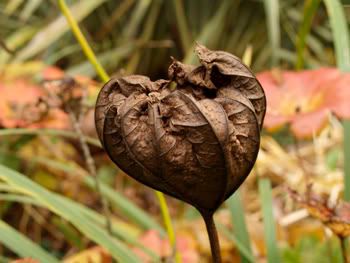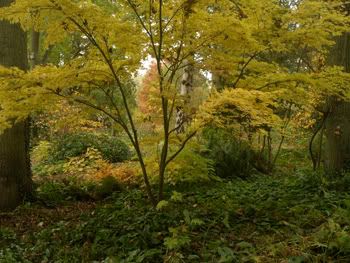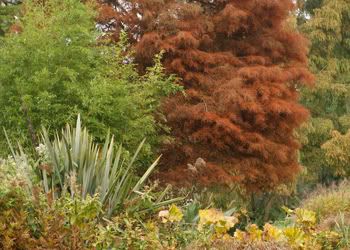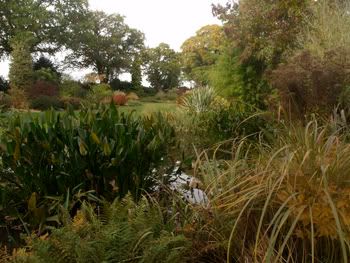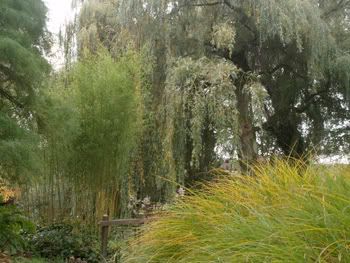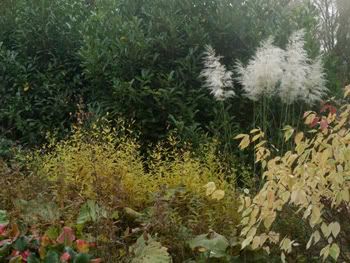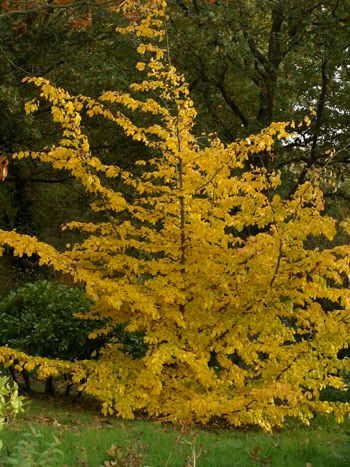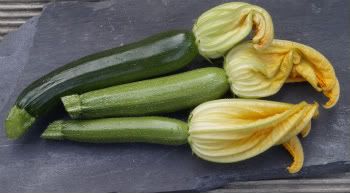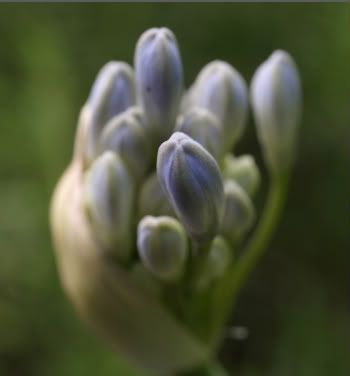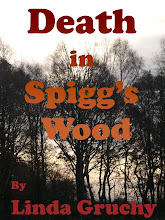So much for resolutions. I resolved to keep this blog up to date, but found I’ve been too busy actually doing rather than writing about doing. When we were on holiday I kept notes which I hope to turn into articles when I have the time. We had a great holiday, then came back to problems which needed resolving immediately. The weeks have slipped past and I realised that I haven’t made as good use of my yearly ticket to Beth Chatto’s as I might have done.
Whilst on holiday I read several books on photography because I’m still not getting the results I want. I feel a bit weak in landscapes, an important part of garden photography. This became apparent when I was at Wickham Place Farm trying to photograph the cyclamen in the woods. Many of the photos I took are just not as crisp as I hoped. This was partly due to camera shake, which has been cured by using a remote, and partly due to incorrect aperture setting. I decided that a day at Beth Chatto’s practicing landscape shots would be a good idea.
I got there early, first visitor of the day. I wondered if I would be able to capture pristine dew on the lawns, but of course, the gardeners were already hard at work, so there were footprints in the dew. I was also excited about the angle of the sun first thing in the morning. I knew the shadows would be quite harsh in the sunshine, and digital photography is unforgiving of shadows, but I thought shafts of sunlight in the woods would be worth trying to capture. Besides which, there is a lovely silver birch tree at Beth Chatto’s which looks wonderful when the low angled sunlight falls on it.
A mischievous wind yesterday put paid to hopes of close up photography and often frustrated the landscape shots.
Every time I go to Beth Chatto’s I am reminded of why I like the gardens so much. The beds have a certain rhythm which makes a poem of the whole. The gardens are at ease with the landscape. A visitor said to me yesterday that everywhere you look there’s something new to see, and he thought that if you went back the next day you would see things you’ve missed the day before. I told him I had done just that (a benefit of a yearly ticket).
I took a lot of photos, and I think the best way to convey why I hold these gardens in such high regard is to post some photos with a few remarks under them.
Beth Chatto’s garden works well in every dimension, including time. The shadows, albeit rather harsh on the photographs, add to the tapestry of colour and movement. When I arrived there was dew on the grass and the shadows were long. This added to the sense of mystery and movement. The shadows emphasised where the sun was lighting up the borders.
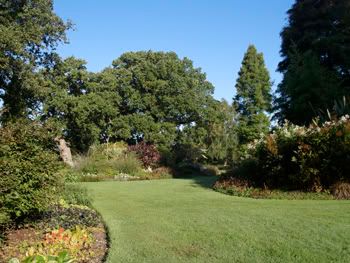
As the day unfolds, more plantings come under the spotlight.
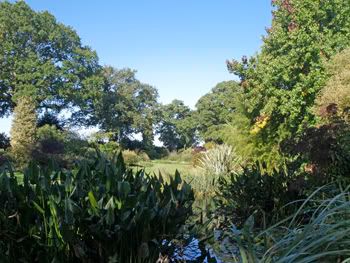
The brilliant sunshine picks out the bark on the eucalyptus.
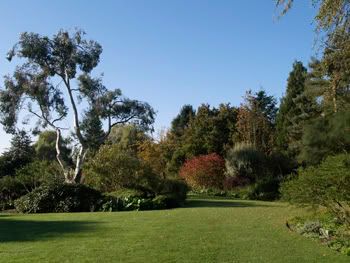
The lakes are beautiful in all their moods.
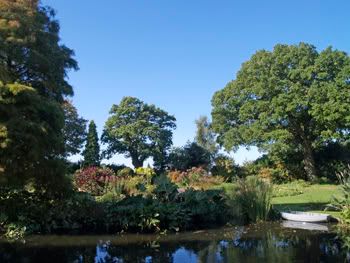
I love the multi-branched silver birch. Here it is lit by the low angled sun, and reflected in the lake.
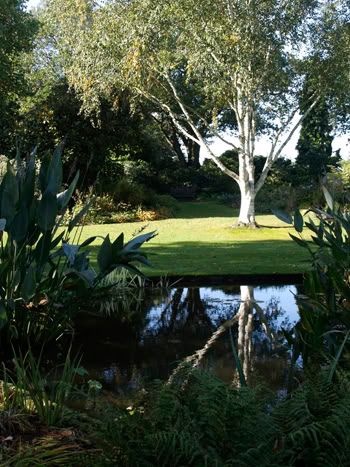
I found this view utterly intoxicating. Beth Chatto happened past with a professional photographer (judging by the size of his camera) and I burbled ecstatically about the light on the tree. If the kids had been with me they’d have been cringing with embarrassment at this point. (Sigh.)
Across the lake Beth Chatto has a bench perfectly placed to admire this tree. You can see the spot where I took the first photograph.

There is clever use of trees and bark throughout the garden. This eucalyptus has grown massively since my first visit ten years ago.
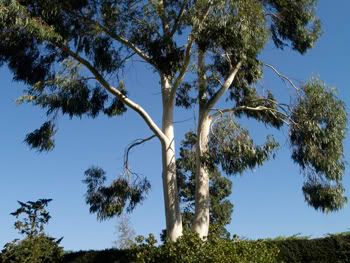
Some trees have gone, like the Paulonia (which I wept over). It had become dangerous. But three small ones are growing well near a Ginko Biloba. The leaves on the Ginko go butter yellow in autumn, but I was too early for that. Likewise there is a Liquidamber which goes glorious red, but again, I was a little too early.
Looking up gives another dimension often overlooked. This is part of an ancient oak tree at the entrance of the gardens.
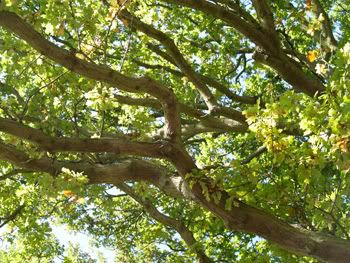
There is a “secret” sitting place near the lakes under the Liquidamber. I love sitting here looking out.
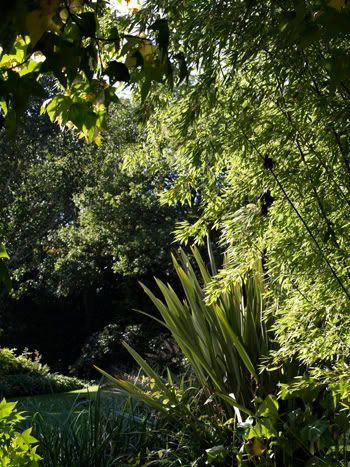
There is so much texture and form with the different leaf shapes and colours.
The grasses are wonderful, often lit up by the low sun. The grasses add movement in the wind, and ever-changing pattern of texture and form.
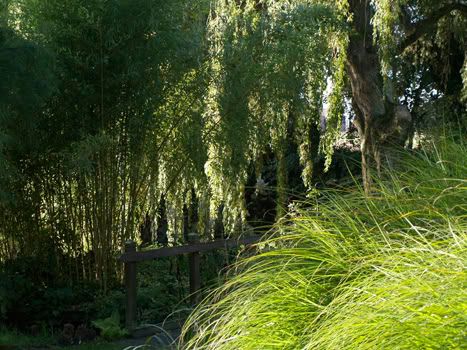
Although the shadows may seem harsh, the contrast lights up the grasses in this shot.
The pampas grass looks dated when plonked in the middle of a 1960s lawn. Here it has room to show itself off.
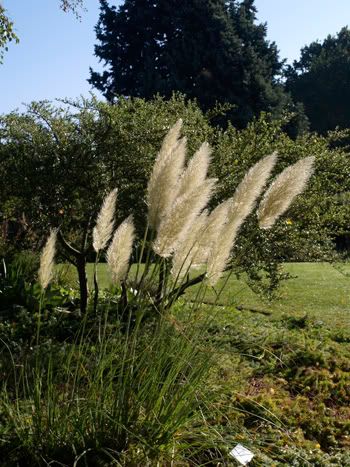
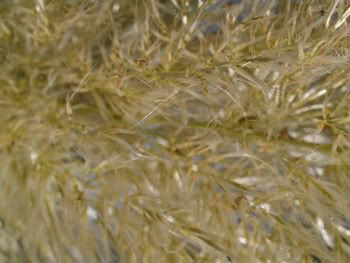
The Miscanthus is still in its pink stage. Later in the year this will become fluffy and white, giving winter interest. I have one in a pot as my garden is too small to allow it to grow the way it should.
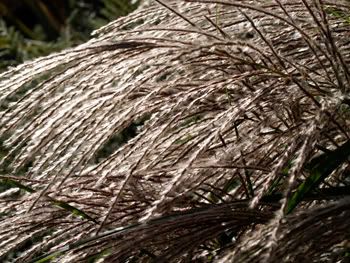
I have just bought some Hakonecloea (Japanese Forest Grass) because this moves beautifully in the wind and isn’t so big. I have planted mine in my thug-bed.
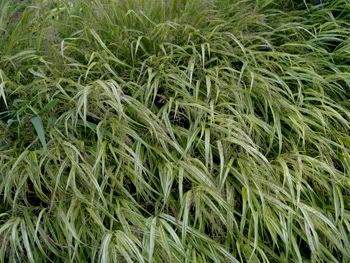
In the gravel garden the sun lights up this grass.
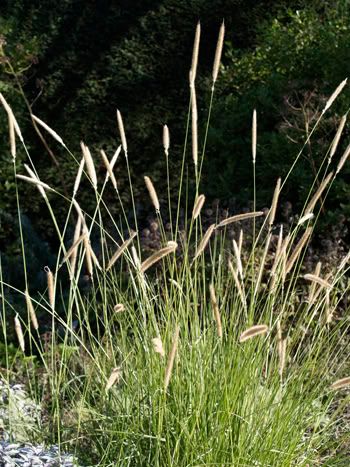
This is the gravel garden in its autumn raiment.
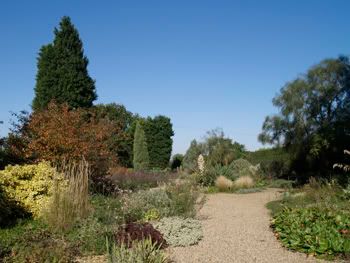
Grasses, as well as giving movement to a garden, are semi-see-through, which adds another layer of interest. They catch the low light and make the garden come alive with golden fire.
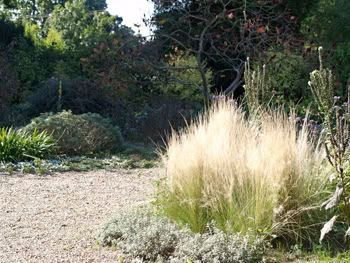
The grasses here contrast well with the lovely blues and purples of the Michaelmas daisies in the bed next to the woods. This bed is also next to the nursery beds which act as a beautiful backdrop.
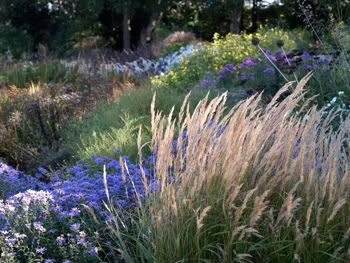
The wood is very pretty in the dappled sunlight. I had hoped there might be mysterious mist but there wasn’t.
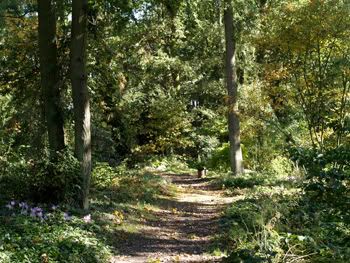
I must, I really must go back soon when the leaves have turned.

